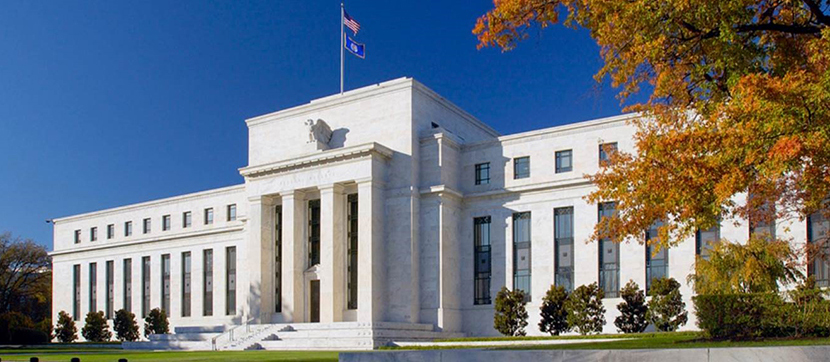
FOMC Quietly Leaves Things Be

The first meeting of the Federal Open Market Committee during the Biden Administration was, as fitting, quiet and uneventful.
“The FOMC left rates unchanged at their January 27 meeting, continuing to indicate that short-term rates will stay low for years to come,” said Mike Fratantoni, Chief Economist with the Mortgage Bankers Association.
As with previous statements, the FOMC noted the coronavirus continues to weigh heavily on the economy. “The path of the economy will depend significantly on the course of the virus, including progress on vaccinations. The ongoing public health crisis continues to weigh on economic activity, employment, and inflation, and poses considerable risks to the economic outlook,” The FOMC said.
Fratantoni noted with respect to asset purchases, the statement also made clear that the Committee is waiting for “substantial further progress” until they begin to taper their purchases of Treasuries and mortgage-backed securities.
“However, market participants remain uncertain regarding how to interpret the Fed’s asset purchase intentions – and are wary of another quick move in rates – should the economy rebound strongly in the second half of this year,” Fratantoni said. “MBA does indeed forecast for faster economic growth, given the positive news in recent weeks regarding improved vaccine deployment.
Fratantoni said one question to consider is would a burst of inflation, and a quick drop in the unemployment rate, be sufficient enough to cause the Fed to at least begin thinking about slowing their asset purchases? “The announcement of such a change in plans would impact market rates well in advance of the actual change,” he said.
The latest MBA forecast notes the housing market is booming, with home sales at their highest levels in more than 10 years, and home prices increasing rapidly. “We continue to forecast that 2021 will be a record year for purchase originations, supported by favorable demographic trends, a recovering labor market and low mortgage rates,” Fratantoni said.
The full FOMC statement appears below:
“The Federal Reserve is committed to using its full range of tools to support the U.S. economy in this challenging time, thereby promoting its maximum employment and price stability goals.
“The COVID-19 pandemic is causing tremendous human and economic hardship across the United States and around the world. The pace of the recovery in economic activity and employment has moderated in recent months, with weakness concentrated in the sectors most adversely affected by the pandemic. Weaker demand and earlier declines in oil prices have been holding down consumer price inflation. Overall financial conditions remain accommodative, in part reflecting policy measures to support the economy and the flow of credit to U.S. households and businesses.
“The path of the economy will depend significantly on the course of the virus, including progress on vaccinations. The ongoing public health crisis continues to weigh on economic activity, employment, and inflation, and poses considerable risks to the economic outlook.
“The Committee seeks to achieve maximum employment and inflation at the rate of 2 percent over the longer run. With inflation running persistently below this longer-run goal, the Committee will aim to achieve inflation moderately above 2 percent for some time so that inflation averages 2 percent over time and longer‑term inflation expectations remain well anchored at 2 percent. The Committee expects to maintain an accommodative stance of monetary policy until these outcomes are achieved. The Committee decided to keep the target range for the federal funds rate at 0 to 1/4 percent and expects it will be appropriate to maintain this target range until labor market conditions have reached levels consistent with the Committee’s assessments of maximum employment and inflation has risen to 2 percent and is on track to moderately exceed 2 percent for some time. In addition, the Federal Reserve will continue to increase its holdings of Treasury securities by at least $80 billion per month and of agency mortgage‑backed securities by at least $40 billion per month until substantial further progress has been made toward the Committee’s maximum employment and price stability goals. These asset purchases help foster smooth market functioning and accommodative financial conditions, thereby supporting the flow of credit to households and businesses.
“In assessing the appropriate stance of monetary policy, the Committee will continue to monitor the implications of incoming information for the economic outlook. The Committee would be prepared to adjust the stance of monetary policy as appropriate if risks emerge that could impede the attainment of the Committee’s goals. The Committee’s assessments will take into account a wide range of information, including readings on public health, labor market conditions, inflation pressures and inflation expectations, and financial and international developments.
“Voting for the monetary policy action were Jerome H. Powell, Chair; John C. Williams, Vice Chair; Thomas I. Barkin; Raphael W. Bostic; Michelle W. Bowman; Lael Brainard; Richard H. Clarida; Mary C. Daly; Charles L. Evans; Randal K. Quarles; and Christopher J. Waller.”
